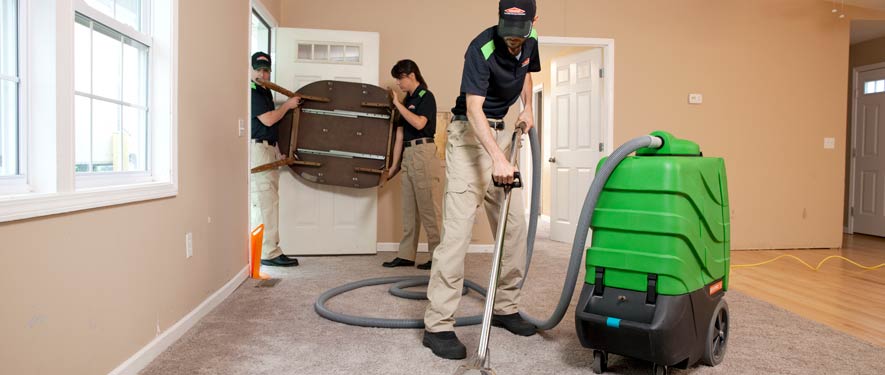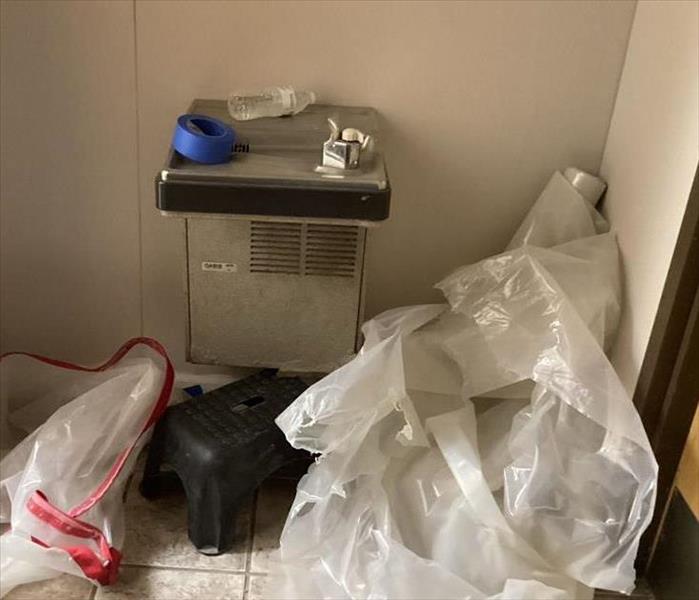
Step 3: Water Removal / Water Extraction
After we have explained the damage assessment and recommended course of action to you and your insurance agent, we can begin the drying process.
Our team of highly trained professionals will begin extracting the water from your home or business. We use powerful pumps and truck-mounted vacuum units to quickly remove hundreds or thousands of gallons of water from your property. As you can imagine, this will remove the majority of the water.
The next steps in the extraction process will be determined by the type of water loss and the age of your property.
We may need to remove carpeting, baseboard and sheetrock. We may need to treat and disinfect the subfloors, and we may need to drill holes in the kick plates of cabinetry if the loss affected your kitchen or bathroom.
Move-Out / Pack-Out
If your home requires extensive restoration or cleaning, SERVPRO of Durant can conduct an organized, efficient move-out to protect your belongings from further damage.
- Move-Out Service
Emergency Water Removal
Our highly trained technicians will begin the water removal process almost immediately. Depending on the amount of water, we may use powerful submersible pumps in addition to industrial strength, wet/dry vacuums. Removing most of the water helps reduce drying time and helps prevent secondary water damage and mold and bacterial growth.
- Remove Excess Water
- Use Submersible Pumps and Industrial Wet/Dry Vacuums
Inspect the Carpet Pad and Carpet
We inspect the carpet and pad and determine if they should be removed to protect the subfloor.
- Inspect Carpet Pad and Remove If Needed
- Inspect Carpet and Remove If Needed
Water Removal Equipment
- Moisture detectors, hygrometers, and other meters measure the extent of moisture saturation.
- Infrared cameras may be used to find “hidden” water behind walls and ceilings.
- Submersible and gas-powered pumps are used for continuous pumping of high-level water.
- Truck-mounted and portable extraction units perform efficient water removal.






 24/7 Emergency Service
24/7 Emergency Service



